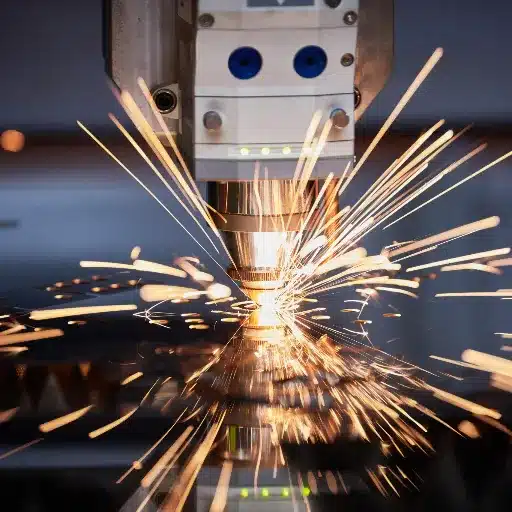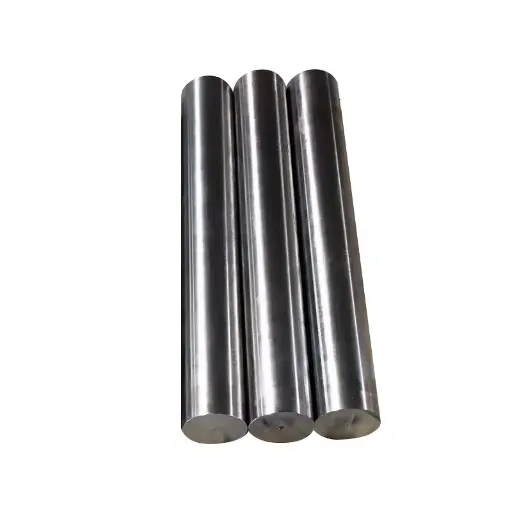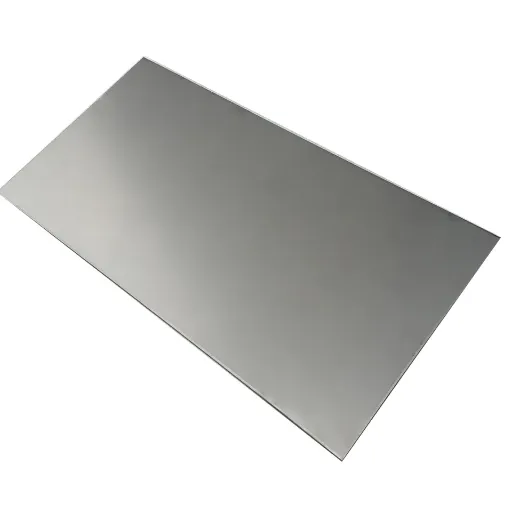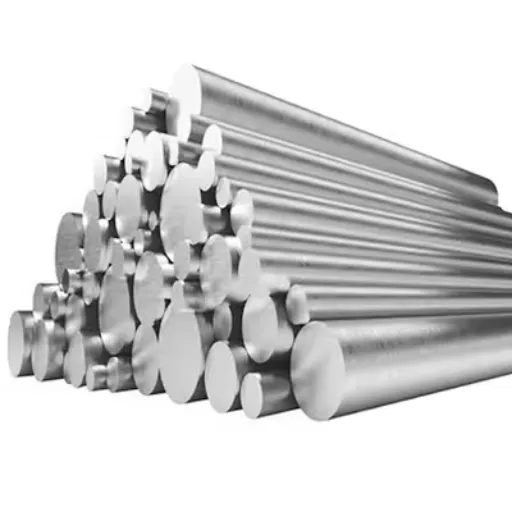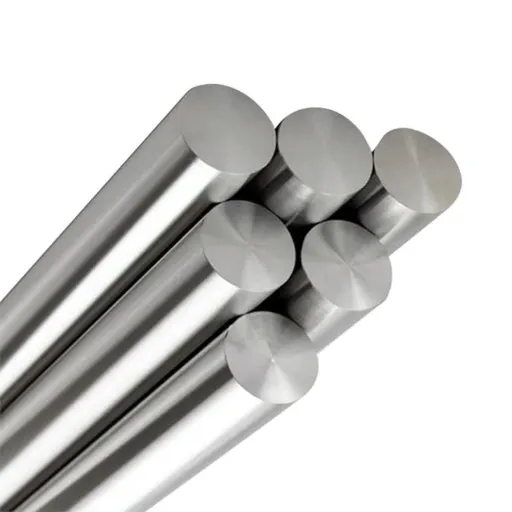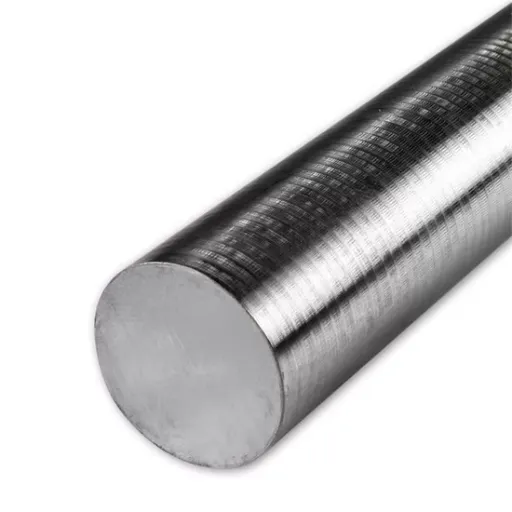In high-performance materials, 4340 alloy steel is a true metallurgical challenge. This steel alloy remains a preferred choice for many engineers, manufacturers, and sectors from aerospace to automotive because of its phenomenal strength, toughness, and versatility. But why is 4340 alloy steel so special? What does it outperform, when, and where is it used most? In this complete guide, we will answer all the questions and discuss the properties, applications, and salient features of 4340 alloy steel. For professionals looking for constructive information or for those with curious minds about modern engineering, this article will elaborate on why 4340 alloy steel is chosen in rigorous environments.
What is the Chemical Composition of 4340 Alloy Steel?
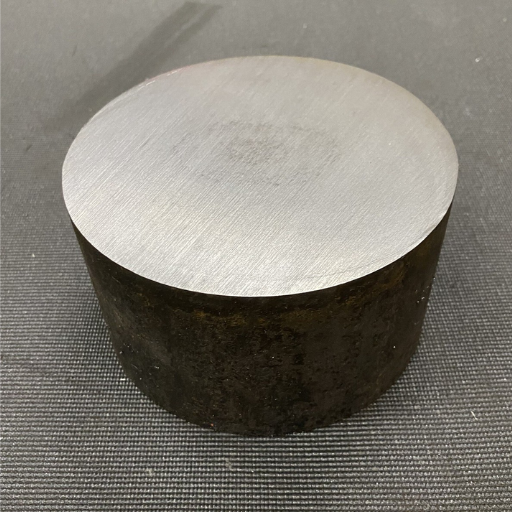
The listed elements are what constitute the 4340 alloy steel:
- Carbon (C): 0.38–0.43%
- Manganese (Mn): 0.60–0.80%
- Silicon (Si): 0.15–0.35%
- Chromium (Cr): 0.70–0.90%
- Nickel (Ni): 1.65–2.00%
- Molybdenum (Mo): 0.20–0.30%
- Iron (Fe): Balance
As you can see, the 4340 alloy steel has all of these components. This balanced combination provides strength, ductility, and impressive wear resistance, making high-stress applications easier to withstand.
Understanding the Chemical Composition of 4340 Steel
The mechanical properties and performance of 4340 steel are primarily influenced by its chemical composition. Provided below is a summary of five relevant constituent elements:
- Carbon (C)
- Range: 0.38 – 0.43%
- Purpose: Carbon increases the hardness and strength of steel when heat treated, while also improving wear resistance.
- Manganese (Mn)
- Range: 0.60 – 0.80%
- Purpose: Manganese improves the toughness and hardness and also enhances the machinability whilst reducing brittleness.
- Chromium (Cr)
- Range: 0.70 – 0.90%
- Purpose: Chromium increases materials hardenability, wear resistance and provides excellent corrosion resistance.
- Nickel (Ni)
- Range: 1.65 – 2.00%
- Purpose: Nickel enhances strength and toughness of steel while improving resistance to impact and fatigue.
- Molybdenum (Mo)
- Range: 0.20 – 0.30%
- Purpose: Molybdenum enhances the strength of steel at high temperatures and improves wear and deformation resistance.
Steel composition and manufacturing processes greatly affect the properties of 4340 steel. The specific blend of elements must be meticulously maintained at every step of the manufacturing process to meet the demanding requirements of tough applications.
The Role of Nickel, Chromium, and Molybdenum in 4340
| Element | Role in 4340 Steel |
|---|---|
| Nickel | Enhances toughness and fracture resistance |
| Chromium | Improves hardness, wear resistance, and strength |
| Molybdenum | Boosts strength, heat resistance, and hardenability |
Comparing 4340 and 4140: Key Differences
| Parameter | 4340 Steel | 4140 Steel |
|---|---|---|
| Nickel Content | Contains 1.65-2.00% | No nickel |
| Strength | Higher strength and toughness | Moderate strength and toughness |
| Hardenability | Better hardenability | Lower hardenability |
| Fracture Toughness | Superior fracture toughness | Less fracture toughness |
| Corrosion Resistance | Better due to nickel content | Moderate corrosion resistance |
| Applications | Aerospace, heavy machinery, crankshafts | Gears, bolts, automotive parts |
| Cost | More expensive | Less expensive |
Exploring the Mechanical Properties of 4340 Steel
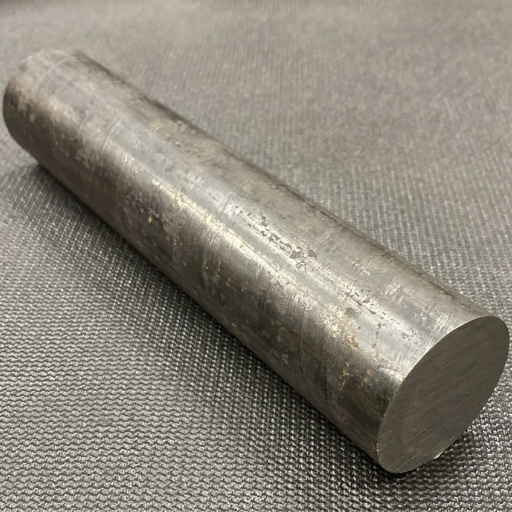
The features of 4340 steel include its exceptional strength, toughness, and wear resistance, making it an ideal option for demanding applications. Its usual tensile strength falls between 930 MPa and 1080 MPa while being heat-treated. The material also exhibits remarkable fatigue strength resistance when exposed to stress. In addition, 4340 steel demonstrates high impact and good temperature resistance, allowing it to retain its properties even during high temperatures. These characteristics make steel ideal for aerospace and automotive industries, which focus on high performance due to the steel’s aiding features, such as high hardenability and uniform thickness throughout.
How 4340 Steel Achieves its High Strength
It is due to the heat treatment processes of the 4340 steel that provide and enhance the remarkable strength featured in the steel itself. The methods result in an advanced composition of metal. The steel is fabricated from low-alloy molybdenum, nickel, and chromium with the addition of 0.38-0.43% of carbon, 2.00% of nickel, while having the composition of 0.70-0.90% for chromium, and 0.20-0.30% of molybdenum. Other than improving the strength of the steel, these elements also enhance its ductility and toughness—the properties of carbon, nickel, and molybdenum further aid stress, impact, and fatigue resistance.
To achieve optimal mechanical properties, 4340 steel is often subjected to the quenching and tempering processes. During quenching, the material is heated to a critical temperature (around 1500°F or 815°C) then cooled rapidly in oil or water. The material’s microstructure is altered, which increases its hardness. Following quenching, the steel is tempered, or reheated, to a lower temperature (typically between 400-1200°F or 200-650°C) to regain some ductility while lowering brittleness without compromising strength.
Tensile strength of 4340 is said to exceed 1080 MPa, and when coupled with excellent fatigue resistance, the steel is ideal for demanding applications within the aerospace and automotive industries. Components like aircraft landing gears, crankshafts, and drive axles benefit from its superior resistance to impact, wear, and fatigue, making 4340 the ideal steel to withstand measurable stress. With chemical optimization and precise thermal treatment achievements, 4340 steel stands out across mechanical industries for its superior strength, durability, and reliability.
The Toughness and Ductility of 4340 Alloy Steel
| Parameter | Key Points |
|---|---|
| Toughness | High fracture toughness, 53-110 MPa√m |
| Ductility | Elongation range: 11-23% |
| Heat Treatment Impact | Toughness and ductility depend on treatment |
| Applications | Used in aerospace, automotive, heavy machinery |
| Strength-Toughness Balance | Excellent trade-off for structural uses |
4340 Steel’s Tensile and Yield Strength
The composition and treatment process of 4340 steel determines its tensile and yield strength, and from what I have studied, this steel preforms exceptionally well. It usually gets processed with tensile strengths ranging from 260,000 to 280,000 psi and a yield strength of around 140,000 to 160,000 psi. Achieving these properties certainly puts this steel forth as an optimal candidate for critical applications which require an exceptional level of ductility and toughness.
How Does the Heat Treatment Affect 4340 Steel?
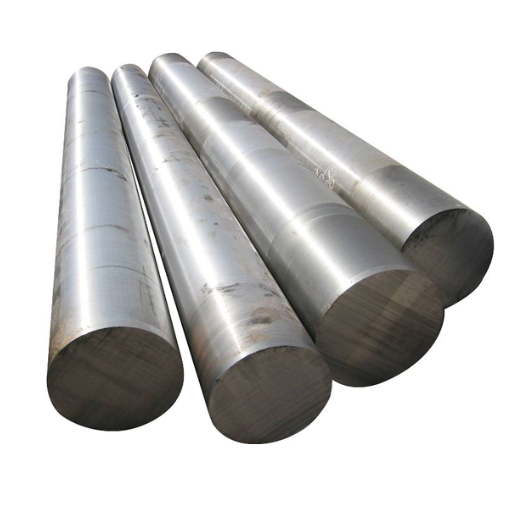
In two steps, Quenching and Tempering, the hardness, strength, and toughness of 4340 are increased. Due to its alloying elements, heat treatment helps to increase strength, therefore enhancing the mechanical properties of 4340 steel by quenching and transforming the microstructure into martensite. Tempering helps ease the steel’s brittleness while also improving the material’s mechanics. The 4340 undergoes versatile quench processes for tailoring forming extremes, thus it is used in load and tension applications. Strong steel is known for giving precision under such treatments.
Understanding the Annealed Condition of 4340
Machining further becomes easy due to the 4340 steel being heated and cooled, as it allows machining, hence its softened state for annealed structure gives better 4340 restoration.
Impact of Heat-Treated Processes on 4340
| Heat Treatment Process | Key Impact | Microstructure Changes | Mechanical Properties |
|---|---|---|---|
| Annealing | Enhances ductility, reduces hardness | Ferrite and pearlite formation | Improved machinability, reduced strength |
| Quenching | Increases hardness and strength | Martensite formation | High hardness, residual stresses |
| Tempering | Reduces brittleness, maintains hardness | Tempered martensite | Balanced toughness and strength |
| Step Quenching | Combines strength and ductility | Mixture of bainite and martensite | Enhanced elongation and impact energy |
| Isothermal Quenching | Optimizes toughness and strength | Bainite formation | Improved impact resistance |
The Importance of Pre-Hardened and Tempered 4340
Altered to base metal undergo further processing as the pre-hardened and tempered condition changes, because the blend serves many purposes. With high demand for heavy machinery, and aerospace applying such steel to cars, it also provides great precision under stress alongside its vaunted strength, toughness, and wear resistance, making it essential for many industries.
A significant benefit of pre-hardened 4340 steel is that it allows for direct machining after heat treatment, making further hardening unnecessary. For instance, pre-hardened 4340 is said to possess hardness values ranging from 30 to 40 on the Rockwell C scale (HRC), which is strong enough for some heavy-duty work but soft enough to be ductile to reduce the chance of stress-induced cracking.
Moreover, tempering improves the steel’s toughness, allowing it to withstand impacts and thermal stress. According to Industrial testing, tempered 4340 steel has a tensile strength of about 1500 megapascals (MPa) while being highly resistant to fatigue. This quality makes it useful in highly stressed applications like airplane landing gear, crankshafts, and drilling tools.
Due to improvements in technology used for treating steel, modern pre-hardened and tempered 4340 Steel provides minimal differences in performance and maximized longevity, therefore delivering consistent quality. The combination of high strength alongside ease of machining makes this tempered steel invaluable during the mass production of precision components for critical engineering applications.
What are the Typical Applications of 4340 Steel?
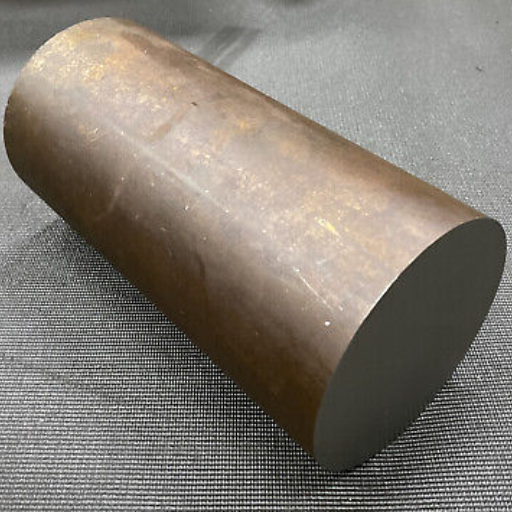
These industries frequently rely on 4340 steel due to its optimal strength, toughness, and wear resistance:
- Aerospace parts (landing gear, propeller shafts)
- Automotive goods (crankshafts, connecting rods, axle shafts)
- Oil & Gas tools for drilling (drill collars, drill bits)
- Industrial equipment (heavy-duty machinery shafts, industrial-grade gear shafts)
The superb machinability and durability make the steel exceptional for critical applications.
Using 4340 in the Automotive Industry
Because of its hardness, unrivaled strength, resilience, and fatigue resistance, 4340 steel is frequently employed in the automotive industry. All of these aspects contribute to the dependability of the steel under harsh, stressful situations or during operations. Here are five important uses of 4340 steel in the automotive industry:
- Crankshafts
4340 steel crankshafts are used in more modern vehicles due to their ability to withstand immense torsional load, resistance to fatigue, and exceptional power capabilities, enabling them to survive in extremely high operational circumstances.
- Connecting Rods
Durability, especially under massive compressive and tensile strains, is the key attribute of 4340 used in connecting rods, which substantially increases the engine’s efficiency and power output.
- Axle Shafts
Enduring any form of impact while under a heavy load, 4340’s remarkable toughness guarantees the reliability of the axle shafts, arguably the most crucial criterion for vehicle performance.
- Gears
Modern vehicles operate much more smoothly than older models due to refined gear systems made of 4340. This type of steel protects against excessive wear throughout use in manual or automatic transmissions, which leads to extended vehicle life.
- Drive Shafts
None of the other materials usually deployed for drive shafts can compete with 4340 steel, considering it guarantees immense stiffness and fatigue resistance while still allowing torque transmission and vibration dampening in the vehicle.
This clearly shows why 4340 steel will always be a go-to material in the automotive industry, considering its sought-after substantiated performance and safety guarantees.
4340 Steel in Aircraft Landing Gear Manufacturing
The manufacturing of airplane airframes, which includes building steel Landing gears, heavily depends on the superiority of toughness, strength, and fatigue resistance of 4340 steel. For me, the material’s ability to withstand the intense stress and loads during the landing and takeoff of airplanes guarantees the safety and reliability of aircraft. Because of high levels of impact and strikes claimed in aviation, the provided options have guaranteed impressive tensile strength that is critical in aviation hardware.
Other Applications of 4340 Material
What makes an alloy useful across industries? Properties like strength, sturdiness, and fatigue resistance are some of the key traits making 4340 steel a versatile alloy. Steel 4340 is most commonly used for landing gears in aircraft but is also heavily employed in the automotive, manufacturing, and energy industries.
- Automotive Industries
Steel 4340 is frequently requested to assemble high-end automobile parts, like crankshafts, connecting rods, and axles. These parts require immense amounts of strength to provide durability and a great deal of stress resistance. This is precisely why treated steel 4340 is used, as its crankshafts have a tensile strength of roughly 200 ksi. It is also used in race cars and heavy-duty trucks.
- Oil and Gas Industry
Steel 4340’s stunning impact resistance, coupled with superior hardenability, allows it to withstand extreme environments. Because of this, the energy industry utilizes 4340 material for drill bits, collars, and various tool joints that are exposed to extreme oil rig pressures. These components greatly enhance operational efficiency and reduce the chances of component failure.
- Tool Manufacturing
Along with other manufacturing tools, 4340 steel positively impacts dies and molds. Its retention of strength and hardness under repeated stress makes it an optimal choice for wear-intensive tools. When heat-treated, 4340 steel can achieve exceptional hardness over 60 HRC (Rockwell Hardness), which is great for durability and long use.
- Power Transmission Systems
Industrial and Heavy machinery gears, shafts, and couplings are commonly made of 4340 steel. Its fatigue resistance makes torque and load dependable. Surface treatment, nitriding, and carburizing improve the lifespan of these parts.
The use of 4340 steel has broadened due to advanced material science. Modern techniques like Vacuum Arc Remelting (VAR) also strengthen steel’s material quality. Its versatility across several industries showcases its reliance on this alloy in high-performance applications.
How Does Machinability and Weld Performance Affect 4340 Steel?
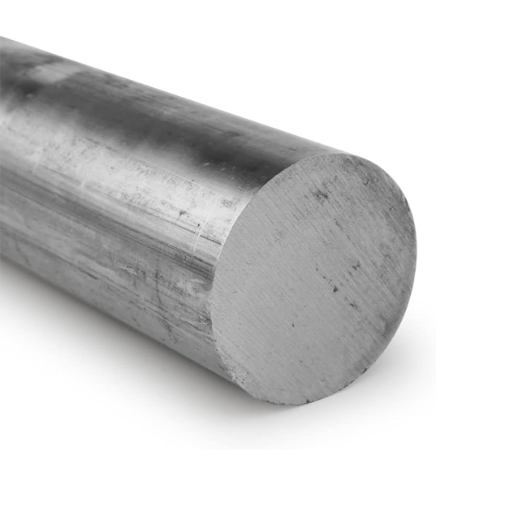
The performance characteristics of machinability and weldability impact how effective 4340 steel is in a given application. 4340 steel is moderately machinable but can be enhanced with post-heat treatment and the correct cutting tools. Its machining enhances the surface finish and accuracy of the components’ geometric features.
Preparation for welding 4340 steel has to be done with care due to its strength and hardenability characteristics. It can crack due to thermal stress. Applying pre-heating and post-weld heat treatment alleviates the thermal stress imposed on the structure, retaining the integrity of the steel structure. These aspects influence the reliability and performance of 4340 steel under harsh conditions.
Machining Techniques for 4340 Steel
Machining 4340 steel must be done carefully and systematically because of its high strength and toughness. The modern techniques and tools available today allow the efficiency of the process to be maximized while maintaining the desirable properties of the material. Here are some considerations and facts, and figures, strategies for machining 4340 steel:
- Choosing the Right Tool
The hardness of 4340 steel requires HSS or carbide tools. Recommendations for tools that are more effective during the machining process are those made from carbid,e since they are more resistant to wear and can cut at higher temperatures without losing effectiveness. Coated carbide tools, such as those with titanium aluminum nitride (TiAlN) coatings, are also more durable and resistant to heat and wear.
- Moving Cutting Tools
The cutting speeds and feed rates must be successfully set to machine 4340 steel. The typical cutting speeds of carbide tools are between 200 and 300 surface feet per minute (SFM). When using HSS tools, slower speeds of about 50 to 100 SFM are better to avoid excessive tool wear. A balance between productivity and surface finish must be maintained for the feed rates. For roughing, a higher feed rate of about 0.005 to 0.010 inches per tooth is preferred, while for finishing operations, they are better off with rates as fine as 0.002 to 0.005 inches per tooth.
- Coolant Usage
Flood cooling is required for 4340 steel due to its significant heat generation during machining operations. Tool wear and surface quality are essential factors that must be managed wisely. Unlike other coolants, water-soluble lubricants tend to better aid in smooth cutting action and prolong tool life, which is why using them contributes to favorable performance.
- Pre- and Post-Treatment Considerations
Machining of heat-treated 4340 steel (typically at 28 – 32 HRC hardness) is more challenging and requires special attention compared to its annealed counterpart due to its toughness and lower machinability. Softening treatments at the initial stage of machining increase the material’s cutability, while post-machining processes involving heating restore its mechanical construct properties, like strength and endurance.
- Cutting Tools and Chip Control
Chip control is made easy with the use of positive rake angle tools, as they help lower cutting forces and manage chip formation. Tools designed for chip breaking help maintain uninterrupted operations in the systems, making them efficient.
- Surface Finish and Accuracy
Components that have been finished need to have a certain level of dimensional accuracy, which can be achieved using precision CNC machines. Achievable surface finishes for turned components are typically expected to be Ra 0.8 to 3.2 micrometers, which depend significantly on the settings of the machine and the feed rates.
If implemented as stated, the above practices, along with exposure to new innovations in super precision machining technologies, can ensure that industries efficiently process 4340 steel while achieving high-quality outcomes.
Optimizing Weld Strength in 4340 Alloy Steel
| Parameter | Key Points |
|---|---|
| Preheat Temperature | Minimum 250°F, ideally 600-800°F |
| Post-Weld Heat | Stress relief at 600-800°F |
| Welding Current | Optimize for penetration, avoid overheating |
| Electrode Type | Use compatible filler (e.g., E7018) |
| Welding Speed | Balance speed to control heat input |
| Shielding Gas | Use argon for TIG, ensure proper flow rate |
| Joint Design | Use square or V-groove for strength |
| Microstructure Control | Avoid excessive heat to prevent defects |
Challenges in the Machinability of 4340
| Challenge | Key Details |
|---|---|
| Hardness Variability | Increased hardness reduces machinability |
| Tool Wear | Accelerated wear on cutting tools |
| Heat Generation | Excess heat impacts tool life |
| Surface Finish | Difficult to achieve smooth finishes |
| Cutting Speed Sensitivity | Requires precise speed adjustments |
| Work Hardening | Material hardens during machining |
| Chip Formation | Produces tough, irregular chips |
| Coolant Dependence | Needs effective cooling for efficiency |
| Tool Material Selection | Requires high-grade carbide or coatings |
| Feed Rate Optimization | Incorrect feed rates cause poor results |
Are There Equivalent Grades to 4340 Steel?
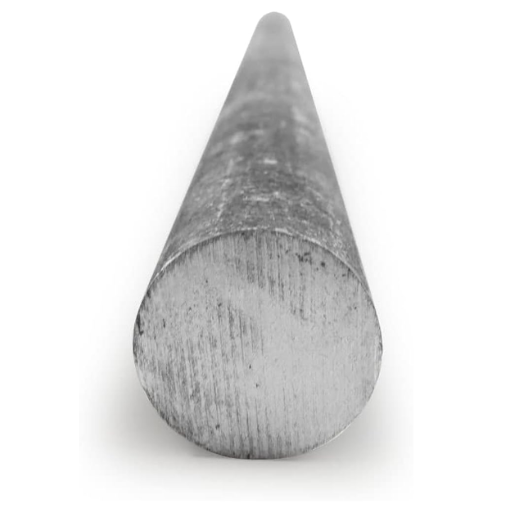
Indeed, equivalent grade designations to 4340 steel have been identified in different standards worldwide. British Standard EN24 and European standard 1.6565 (36CrNiMo4) are some examples of equivalence consideration. These grades exhibit comparable features, including high strength, toughness, and resistance to wear, allowing them to be utilized in similar applications. When choosing equivalent grades, it is necessary to check specific procurement criteria, such as mechanical attributes and heat treatment conditions.
Comparing Equivalent Grades of Steel
When analyzing ot equivalent grades of steel, the most relevant aspects should be included with their associated values to ensure that the grade is appropriate for the particular application. Here is a table of frequently examined and cross-referenced steel grades from various standards showing their respective designations:
- AISI/SAE 4140 (USA) – A chromium-molybdenum alloy steel that exhibits high fatigue strength and impact resistance, typical in automotive parts and machine tools.
- EN19 (BS-970, UK) – A high-tensile steel with excellent wear resistance and ductility is broadly employed for shafts, gears, and bolts.
- 36CrNiMo4 (1.6565, DIN, Europe) – A European standard steel with tremendous toughness and impact strength, useful for heavy applications such as crank shafts and for heavy engineering tool manufacturing.
- 42CrMo4 (1.7225, DIN, Europe) – Exhibits fair hardness with low alloy and high yield strength, useful in producing axle shafts, forging dies, and drilling tools.
- SCM440 (JIS, Japan) – A medium carbon chromium molybdenum steel from Japanese standards, routinely found in manufacturing machine shafts, gearboxes, and other fasteners.
All major industrial features demand respect for all of these grades. An engineer ought to ensure that these mechanical properties, heat treatment processes, and environmental conditions within scope comply with the project at hand.
International Standards for 4340 Steel
| Country/Region | Standard/Specification | Equivalent Grades |
|---|---|---|
| USA | ASTM A29, SAE J404 | 4340 |
| Europe | EN 10250 | 34CrNiMo6 / 1.6582 |
| Britain | BS 970 | EN24 / 817M40 |
| Japan | JIS G4103 | SNCM439 / SNCM8 |
| Germany | DIN W.Nr. | 1.6565 / 40NiCrMo6 |
| France | AFNOR | 35NCD6 |
| China | GB | 34CrNiMo |
| Australia | AS 1444-1996 | 4340 |
The Role of the Supplier in Grade Selection
Suppliers offer material grade selection guidance, using international standards and current market requirements. They offer their insight through compliance with international standards and skills relevant to the project underway.
References
- SciELO: Analysis of quenching parameters in AISI 4340 steel
- ScienceDirect: Hard turning: AISI 4340 high strength low alloy steel
- UTHM Publisher: A Comprehensive review on AISI 4340 hardened steel
Frequently Asked Questions (FAQ)
Q: What are the key properties of AISI 4340 alloy steel?
A: AISI 4340 alloy steel is known for its high strength, toughness, and excellent fatigue resistance. It has good impact resistance and high tensile strength, making it suitable for different applications requiring a strong steel material.
Q: How does 4340 steel compare to 4140 steel?
A: Although 4340 and 4140 are both low-alloy steels, 4340 generally has higher strength and better fracture toughness. 4340 is often preferred in applications requiring a higher strength level and toughness, whereas 4140 is used for applications with moderate strength and machinability.
Q: What are the thermal properties of 4340 alloy steel?
A: The thermal properties of 4340 alloy steel include good thermal conductivity and the ability to withstand high temperatures. This makes it ideal for applications involving thermal stress.
Q: Can 4340 alloy steel be hardened and tempered?
A: Yes, 4340 alloy steel is generally supplied hardened and tempered to achieve a balance of toughness and strength, which is essential for critical structural applications.
Q: What is the machinability rating of 4340 alloy steel?
A: The machinability rating of 4340 alloy steel is moderate, meaning it can be machined effectively with appropriate tools and settings. Its machinability is slightly more challenging compared to lower-strength steels.
Q: Is 4340 alloy steel suitable for high-stress applications?
A: Yes, 4340 alloy steel is particularly suitable for high-stress applications due to its high tensile strength and excellent fatigue strength, making it ideal for components like gears and shafts.
Q: What are the common uses of AISI 4340 alloy steel?
A: AISI 4340 alloy steel is used in various applications such as aircraft components, automotive parts, and other high-strength structural components where good impact resistance and toughness are required.
Q: How does molybdenum content affect the properties of 4340 alloy steel?
A: Molybdenum content in 4340 alloy steel enhances its hardenability and strength, improving its ability to withstand high stress and making it suitable for demanding applications.
Q: What is the difference between annealed, normalized, and tempered conditions for 4340 steel?
A: Annealed 4340 steel is softer and more ductile, normalized and tempered conditions improve strength and fracture toughness, and the hardened and tempered condition offers the best combination of toughness and strength for critical applications.

